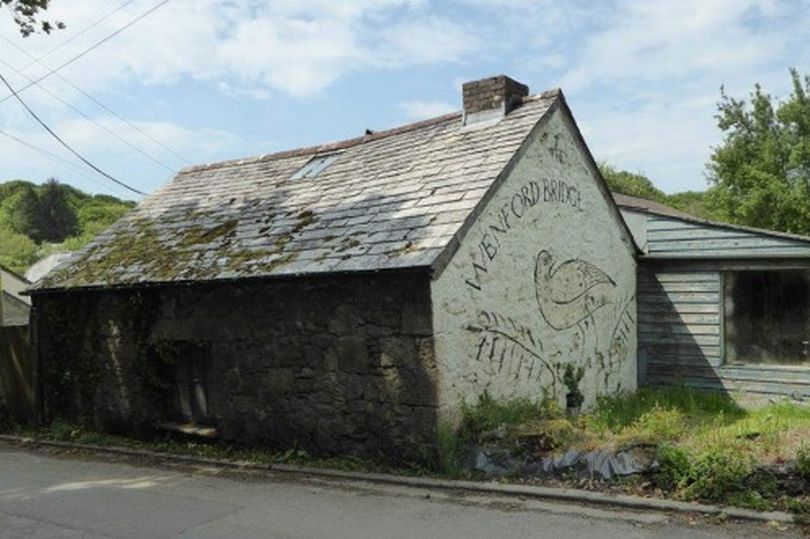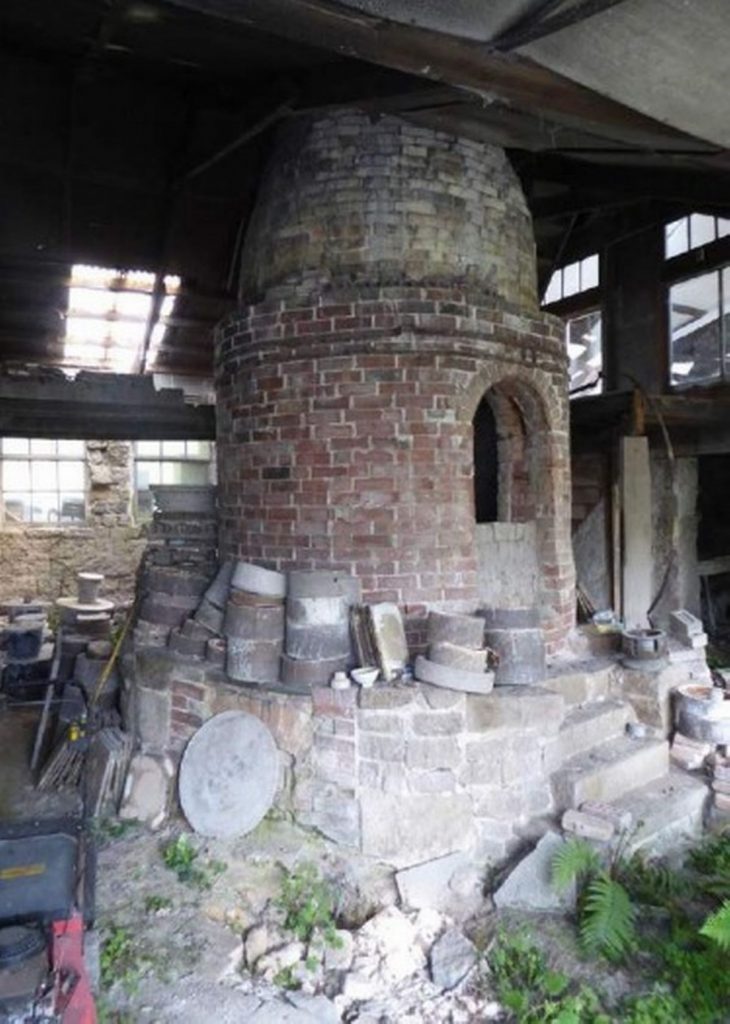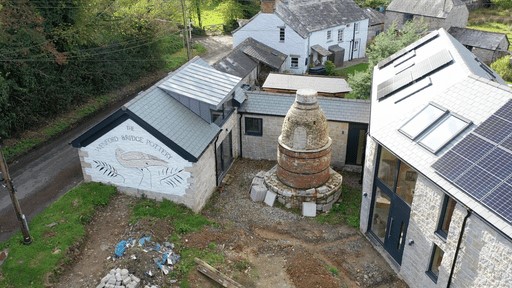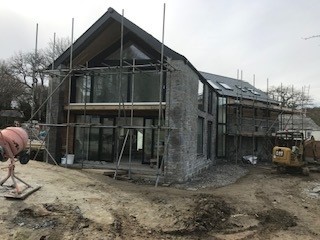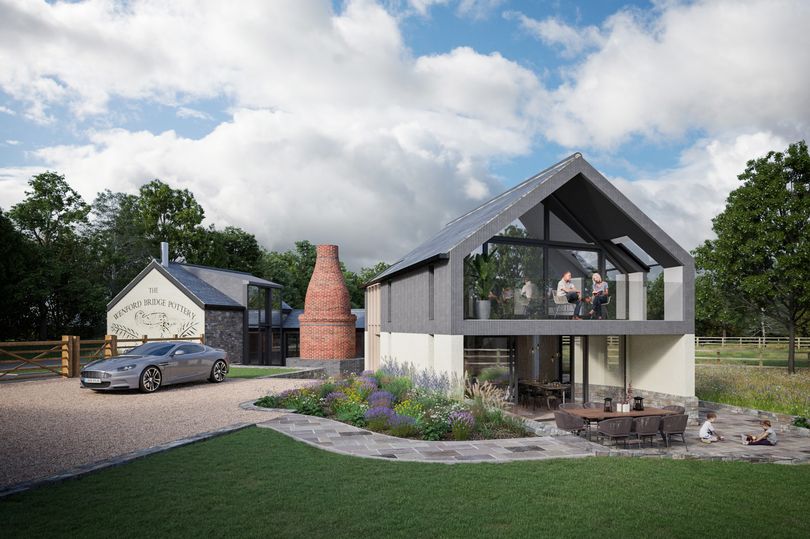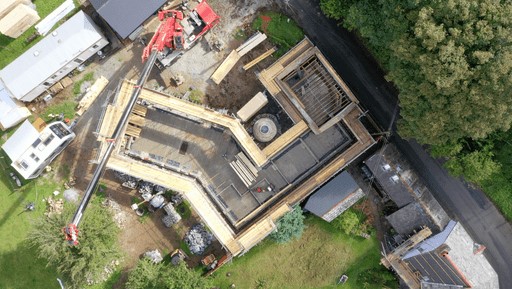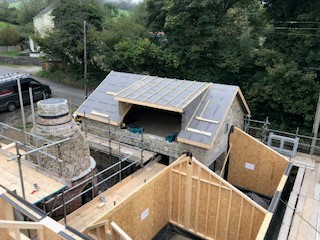Kiln House
Project Location:
Project Type:
Kiln House is a unique 2-storey contemporary home, built on the site of a world-renowned Pottery in the village of St Breward in Cornwall.
Overview
Situated on the site of a historic kiln in Cornwall, this beautiful eco home has been built with a sympathetic approach, retaining many of the old features.
Wenford Bridge Pottery was founded in 1939 and produced much sought after pottery until 2005. The new contemporary building replaced old workshops and storage areas, with the restored kiln in the centre of the courtyard.
Planning permission was very difficult to obtain, with many conversations between the owners, architects, locals and planning department before this heritage focused build was approved.
Many of the rooms have been sited directly in place of the old buildings; the main living rooms with stunning views of the Camel Valley are where the pottery workshop once stood, and the old smithy is now a cosy snug with a bedroom above.
The master bedroom has an impressive balcony, set under the main roof to provide cover whilst enjoying the wonderful views.
The highly insulated envelope is clad in reclaimed stone from the site, and a ground source heat pump and solar panels mean that the home is cost efficient to run.
The property owners finished their sensitive approach to this build by commisioning a local artist to restore the famous Wenford Bridge Pottery mural.
A steel frame enabled large glazed areas to both the dining area and Master Bedroom, for the owners to enjoy the views of the valley, and all of the bedrooms have vaulted ceilings to maximise the light and open feel of the build. This is where the use of SIPS was particularly beneficial, as we were able to span from eaves to ridge, while also incorporating many large rooflights throughout. Steel was also utilised above the kitchen area to create a bridge from the main landing to the Master Bedroom, meaning that the large kitchen area itself is full height, from ground floor to roof.
Glosford also fitted a new SIPS roof over the original coach house, which has been converted into a self-contained annexe for visitors.
Q1. Clearly demonstrate the reasons behind the choice of timber and the ways in which the material met delivery, quality and the homeowners lifestyle expectations
A1: The design of the building, incorporating open plan living spaces, vaulted ceilings and large glazed areas leant itself perfectly to a timber based construction. The clients wish for an energy efficient home meant that they, and their architect, chose SIPS as their preferred method. After visiting Glosford and being impressed with both the product and accuracy of automation involved, the order was soon agreed and signed. Client Comment: We received exactly what we were hoping for, a frame that was precise and of high quality throughout. We were able to get the build water tight within weeks and carry on with the internal works. The installation team were first class, overcoming a few unforeseen snags on site with ease to ensure that the finished frame was defect free and ready for follow on trades.
Q2. How did the design and delivery team work together to make the project as seamless and defect free as possible – was a turnkey approach used?
A2: This was not a turnkey approach, Glosford provided the SIPS structure and steel frame. It was very much a team effort to get this project delivered, involving the owners, architects, structural engineers and Glosfords design and engineering team. There were some amendments required to the original design, to enable best use of the SIPS method, and the owner and architect were responsive and understanding throughout. The new build connects with the original coach house on site, so careful detailing of this intersection was vital to ensure that everything fit together first time. Glosford visited the site to measure ground works and carry out precise laser surveys to ensure that all dimensions were accurate before the frame was manufactured.
Q3. Show how the use of the timber components or build system played a part in achieving a realistic timescale and effective final project delivery
A3: The owners were heavily involved in the site clearing and groundworks, so Glosford needed to be flexible with our start date to suit the pace of work on site. There was open dialogue throughout to ensure that everything was ready to go as soon as site preparation was complete. The frame installation, including steel structure, SIPS frame and internal panels took around 2 1/2 weeks, which the client was delighted with. They were able to carry on with internal works almost immediately, and as self-builders this was a very important point as they did not want extended periods of downtime. Client Comment: The speed of installation was incredible, and the team were an absolute credit to Glosford. I understand buildings, which made working together on site very easy and a pleasure. The frame was fully inspected and checked by Glosfords Contracts Manager with me in attendance, and the handover process was detailed and very customer friendly.
Q4. Demonstrate how the energy consumption, building running costs, overall energy efficiency levels and environmental impact have been substantially improved by specifying timber
A4: Use of the highly insulated SIPS frame, a ground source heat pump and solar panels has resulted in a highly energy efficient home. Client Comment: The U value of SIPS is another big plus, our running costs are now around £50 a month all in, for a 6 bed house!
Q5. Demonstrate that the project has provided a high quality, unique and innovative home and achieved the vision of the homeowner.
A5: By building a modern home while retaining many original features, the owners have managed to achieve a contemporary, efficient build while also ensuring that they have preserved the unique history of the site. Locals who were averse to the original planning permission have remarked on the quality and pleasing aesthetics of the new build. The intersections between the steel frame, SIPS frame, new build and old coach house are testament to how a CNC based offsite approach can overcome significant design complexities. The owners specific visions, including the bridge through the kitchen area, were all made possible by using a SIPS and steel frame build method. Client Comment: We are delighted with our home, and would only use SIPS, and Glosford if we decided to build again. This was only made possible by the great relationships between all involved. The low running costs we have seen through winter are further proof that we chose the right build method.
Project Team Clients – Martin & Sue Jenns Architect – Matthew Austin Groundworkers – MDHP Engineers – Mark Edwards Associates SIPS Designer – Tiago Gavinho

